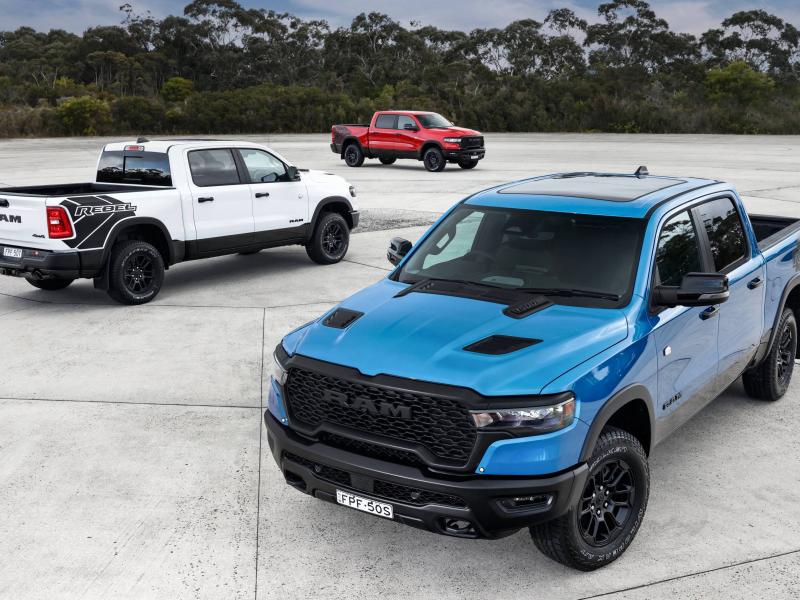In this day and age there are new products appearing all the time, and as technology advances faster than most 4WDs can go, there is always something new around the corner. Recently, for me it was the introduction and advances in the technology of fuel additives, and since there is a common belief that NZ fuels are of a low grade or standard, I wondered if there could be benefits in using an additive or two.
The main fuel suppliers in NZ are always self-promoting their own fuels claiming their own special technology and additives that make their fuel better than the opposition down the road. They boast that their technology has benefits such as increased octane, cleaner burning and that they are more environmentally friendly for the country.
Now, I am always sceptical as to some of the benefits of a lot of these types of products, especially those advertised on TV in those infamous infomercials we are usually hounded with.
Recently I came across a company that produces its own blend of fuel additives for petrol and diesel vehicles – but you won’t find them on the infomercial channels. Hybrid Fuel Technology New Zealand is a company specialising in premium fuels. Their services range from fuel development, fuel quality control, filtration and fuel treatment and condition monitoring, but it was after a discussion with a fellow 4WD member who is now working for the company that I started to take some notice.
It was the fact that the Isuzu Motorsports International off-road race team had tested the fuel blend in its off-road racing Isuzu D-Max Ute with particularly good results. The team even managed a Class win and ninth overall in the 2013 Australasian Safari last year, claiming good performance from a mildly uprated vehicle (rather than their full-out Dakar race vehicle).
The Hybrid Fuel Technology (HFT) technology has been developed over a 10-year period as an engineering project with financial support from the Australian Government and the Department of Innovation, Industry, Science and Research, and the testing conducted by national testing agencies.
It is partnered with Fuel & Infrastructure Management Australia, and has come up with what is described as a revolutionary breakthrough in fuel additive technology, especially for diesel engines.
In Australia there are big fleets operating in some of the harshest conditions imaginable, especially those revolving around the mining industry. The Department of Mines Safety conducted its own tests and found an eight percent reduction in fuel use; CO2 levels reduced by 27 percent; smoke reduced by eight percent, and a reduction in hydrocarbon particulates of five percent. HFT321, the chemical name given to the Fyrex technology, is included in the coal mine regulation act in Australia.
The diesel additive, FyrexC1, can be used as an additive (concentrate) or HFT NZ can supply Super Diesel which is a bulk fuel, pre-treated with its premium and exclusive Fyrex-C1 product. The “super” in the name means exactly that, with un-paralleled benefits. It also reduces foaming, which is often a problem when filling diesel tanks.
In Australia the blended fuel is readily available at the pump through the Metro service station network as premium diesel called Dynamis.
With regard to the petrol treatment, it is usually done as a single shot octane boost when filling the tank, but again can be blended and sold in large quantities for bulk treatment. In New Zealand it is referred to as Eco-XP Advanced Petrol Technology, but is also sold as “F.N. Good Quality petrol treatment” (which was probably named by some Aussies after an F.N. Good booze session).
Either way, it is a formulated multi-duty unleaded petrol additive for all petrol engines regardless of the recommended fuel grade, and is said to increase the octane rating and provide valve seat recession protection, something needed for those who still drive vehicles with engines that rely on the lead that used to be in fuel (for those who can remember back that far).
Having said that, the company does state there is no lead in the product, but says you do get an increase in power, better fuel efficiency and it is safe for catalytic converters and oxygen sensors in the more modern vehicles.
I had to put this to the test myself, so armed with a couple of 250ml bottles I did an unscientific test over 3,000km covering a mixture of countryside from highways to back country roads in both Islands.
I used the vehicle’s on-board computer to get the L/100km at all times, and it was over a period where the speed limit tolerance was reduced to four percent so an eye was kept on the speedometer.
The first 1,200km was spent getting used to the vehicle and to get an indication of the fuel usage before adding it to the tank. During the first few days, with a mixture of around town driving and South Island driving the average was about 13.9-17.5L/100km.
I put that higher consumption down to some enthusiastic accelerating with the powerful V8 and the fact it was left idling a lot of the time while we did the touristy thing and touring back country metal roads.
For the next 1,800km I first used 250ml with a 100 litres of premium petrol, which was a bit more than the recommended dosage, and yes, the tank has 100 litres capacity, which makes filling from empty rather expensive on the wallet. This time the driving included highway cruising, motorway and city driving, and a bit more of the unleashing of the horses of the 210Kw V8, but the wife tended to growl more than the engine whenever I did.
Consumption figures ranged from 13.6L/100km down to as low as 11.7, which is even lower than the official manufacture’s figures of 12.6L/100km for cruising and 16.2L/100km combined with city or urban driving conditions.
Now I am not known for my light foot or being that steady on the accelerator, so have to confess that I did use the cruise control for some of the highway usage, mostly to keep within the reduced speed limit tolerances. This may have factored into the overall reduction.
Loosely based on the figures I got a 15.8 percent fuel reduction on the first tank, and then overall a 9.8 percent reduction. Getting better than the manufacturer’s figures is not hard for most people, but usually is for me. Did the HFT treatment contribute to this reduction? I’m sure it did, so yes.
What I can say is that at the end of the couple of weeks overall I was very pleased with the fuel consumption and the result on my wallet!






